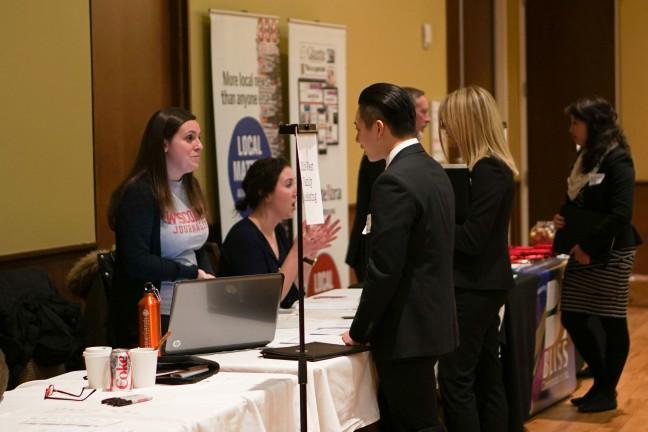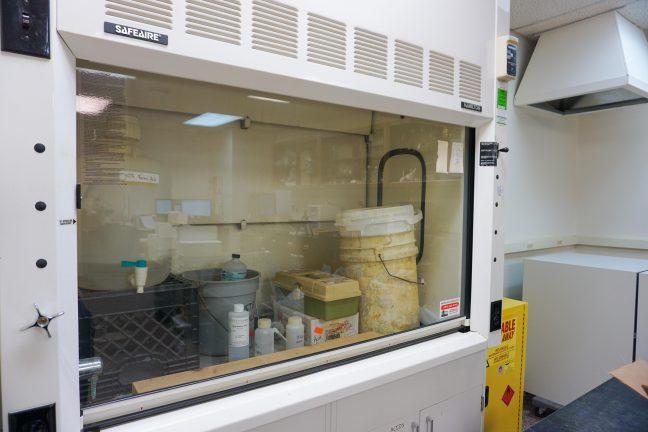There’s been a lot of noise about expanding student seating at basketball games, but there haven’t been many numbers.
Last week the Associated Students of Madison staged a protest at the Kohl Center during the Illinois-Wisconsin basketball game. ASM member Jeff Wright was creating visibility for the issue of expanded seating by handing out fliers. When officials confiscated the fliers, Wright was “infuriated,” and wasn’t given a satisfactory explanation.
“It was very, very unjustified,” he noted.
Zach Frey, a member of the UW Athletic Board, observed, “What’s important is to remember we have the cheapest athletic tickets in the Big Ten. Non-student tickets are more expensive … I think it says a lot about our institution that they try to make tickets affordable,” Frey commented. “I wouldn’t want to see the prices go up to the point where some students couldn’t afford to go to the basketball games.”
While you might argue no one sits down at basketball games anyway, the issue of expanding seating at the basketball games is a hot one, with many students unable to get season tickets, and university officials insisting the demand to expand is financially unrealistic.
Data gathered from Big Ten universities through the Equity in Athletics Disclosure Act provide a glimpse into college sports’ finances. I haven’t found any other data, and some universities even refused to give me this. It’s hard to have a meaningful campus discussion of the issues when one of the interested parties tightly holds most of the related information.
Here are some facts:
The UW generates only about two percent of its total basketball revenues from student-ticket sales, but this share is not out of line with other Big Ten schools and exactly the same as Minnesota and Iowa. Purdue generated only one percent in 2003.
Sales to non-students accounted for about 36 percent of UW’s total basketball revenue, similar to Michigan State (33 percent) and Iowa (38 percent). Purdue received an even smaller share from non-students (28 percent), while Minnesota somewhat more (53 percent).
While these ticket sales are important, only for Minnesota did they account for more than half of the revenue.
Reportedly there are tie-ins for sales of basketball tickets to non-students. To get a season basketball ticket, non-students must make a donation of $1000 to the Badger Fund, which Don Woolston of the Athletic Board told me is “critical to the health of the Athletic Department.” Quite possibly, this additional revenue is included in the column “Cash Contributions from alumni and others,” which totaled $338,000. If so, then non-student ticket sales and tie-ins account for 39 percent of total revenue, or about what Iowa reported. UW Deputy Athletic Director Jamie Pollard was not available to confirm this interpretation.
No Big Ten basketball program showed basketball expenses exceeding revenue; all basketball programs seem quite healthy financially. The lowest performer, Purdue, did very well, with a positive result of $3.7 million. UW’s program shows relatively healthy finances with revenues $7.4 million in excess of expenses.
Tournament earnings, NCAA conference distributions, concessions, radio and television account for $5.1 million or 52 percent of UW’s total basketball revenue — much more than non-student ticket revenues.
Looking at the EADA data, the UW could give away all its basketball tickets and still have revenues exceed expenses by $3.7 million. Or, if half of the basketball tickets currently sold to public and University Faculty/Staff were given free to students, basketball revenues would still total $5.5 million more than expenses.
These numbers suggest charging students anything for tickets is only a question of maximizing the basketball cash flow, not keeping it positive.
It might be that the Athletic Department uses basketball money to prop up other intercollegiate sports that hemorrhage money or pay for its building campaign. If that’s the case, then the issue of expanding the student section at basketball games is really one of how the Athletic Department spends money. My glimpse at the Athletic Department’s finances leaves me with more questions than answers, especially as the UW continues to raise tuition.
Cynthia Martens ([email protected]) is a junior majoring in Italian and European Studies.







